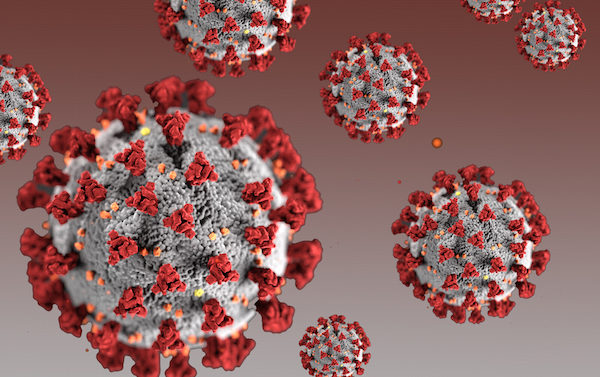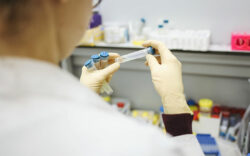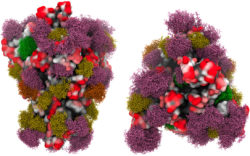The University of Georgia’s weekly COVID-19 update showed a slight increase in positive cases again for the week of Oct. 26–Nov. 1.
According to self-reported data from the DawgCheck app, there were 79 positive cases this week, up from 64 cases last week. Of those cases, 57 were students, 20 were staff and two were faculty. This marks another consecutive week that positive staff cases have increased.
Surveillance testing rates were up again this week, with 2,108 tests given to asymptomatic individuals and 33 positive cases for a positivity rate of 1.57%. In the weeks prior to students going home for Thanksgiving and the semester, UGA will be ramping up surveillance testing to allow for 1,000 tests a day. Of those, 750 nasal swab tests will be available each day at the Legion Field site, and 250 saliva-based tests will be administered at three pop-up locations on campus. Those locations have not yet been announced.
Garth Russo, executive director of the University Health Center and chair of the UGA Medical Oversight Task Force, underscored the importance of students getting tested before going home to see family for Thanksgiving.
“Participation in surveillance testing remains one of our primary tools for keeping the spread of COVID-19 in check, and we are pleased to see that interest in UGA’s testing program remains high,” Russo said in a press release. “As we approach the Thanksgiving holiday, we will be expanding our testing program. Those who are considering traveling to be with loved ones should know whether they are virus-free, and the best way to determine that is to have a negative COVID-19 test before heading home.
The Medical Oversight Task Force released more details and recommendations for the UGA community to plan for going home at Thanksgiving, including when and how to get tested, details on options for quarantining if they test positive prior to the break for the semester and recommendations to prevent possible infection spread once at home.
At the University Health Center, where symptomatic tests are given on campus, there were 158 tests given and 12 positive cases for a positivity rate of 7.6%. That was up slightly from last week’s 10 positive cases and 6.9% positivity rate. Additionally, there were 34 positive cases from tests given in the Athens community and other categories listed in the data.
Incomplete Data
UGA is still not releasing enough data to give the community a complete picture of what’s happening with COVID-19. Without knowing how much the DawgCheck app is actually being utilized to report symptoms and testing, it’s impossible to know whether the weekly data releases are at all reliable.
Additionally, the failure of UGA to include a positivity rate for the university community as a whole, including both symptomatic and asymptomatic testing data, further blurs the true picture. UGA does not give enough information in their weekly data release on the total number of tests given to calculate a positivity rate. The key missing information is testing done outside of the University Health Center and the UGA surveillance site.
“We really use the percent positive rate to assess whether we’re doing enough testing,” said Amber Schmidtke, a public health microbiologist who has been monitoring the COVID-19 situation and produces a daily newsletter explaining the Georgia Department of Public Health’s pandemic data. “We need all of them together in order to make the best estimate.”
Expanding the Athens-Clarke County wastewater study may prove to give us a clearer picture in the coming weeks. Erin Lipp, a professor at the UGA Center for the Ecology of Infectious Disease who heads up the project, said they are increasing weekly sample collection from once to twice a week. Also, they are now able to assess all three local wastewater plants in their data.
“For the wastewater, we are hoping that having samples twice weekly will improve our resolution and possible predictive power. Since each sample represents only a 24-hour window, this will give us a little more insight into changes that might be happening,” Lipp said. “We are also changing the days that are collected so we might be able to see differences between weekend and weekdays. We are hoping to increase updates to twice weekly but it may take us a little time to ramp up.”
Wastewater data this week does show a slight increase, but it’s too early to tell if that is an anomaly. “The seven-day running average for new cases has been about 24–25 for the last week,” she said. “It was running 21–23 the prior week. I am not sure if this is a real difference yet or not. If it is, it is still subtle.”
This week the United States saw over 100,000 new cases of COVID-19 reported in a single day for the first time. This significant milestone underlines just how much the pandemic continues to spread across the country.
Cases, hospitalizations and deaths continue to rise in Athens-Clarke County. As of Thursday, the cumulative totals were 5,951 confirmed cases, 255 hospitalizations and 50 deaths for the county, according to Georgia Department of Public Health data. That’s an addition of 164 cases, six hospitalizations and one death in the past week.
Cases confirmed via rapid antigen tests are now being released daily in Georgia DPH updates. To date, Athens-Clarke County shows 1,071 positive cases via rapid antigen tests, for a total of 7,022 positive cases.
Pandemic Fatigue as Thanksgiving Looms
At the state level, cases are increasing in counties of all types—rural, nonrural and suburban—that suggests that the public is tired of following public health measures.
“So, right now we’re seeing an ever increasing uptick in cases in Georgia,” said Schmidtke. “It’s happening across all county types. It’s all across the state. So, when you see that kind of widespread increase, it doesn’t necessarily point to a specific event. This looks more like pandemic fatigue may be driving this increase.”
The White House Coronavirus Task Force Report for this week, which Flagpole obtained through open records request, suggests that an increasing positivity rate throughout the state may mean that Georgia residents aren’t being tested enough.
“I think that we’re probably not looking for cases where we need to be looking for it,” Schmidtke said. “We’re in kind of a dangerous place right now. We’re seeing increases… the surge is coming. The language on the White House report says that. It’s spreading from the Midwest outward and to the South. We haven’t tipped over into exponential growth yet, but it’s coming.”
While the cases in Georgia are only about half of what we saw in the summer surge, the data suggests that further spread may be on the horizon.
“I’m watching the case rates carefully, but we’re seeing that increases are happening in the 18–24-year-old age group,” Schmidtke said. “They sort of led the summer surge, and then it fanned out to other age groups. We’re seeing a pretty good week-to-week increase in the 18-59 ages. Those working-age populations who are more likely to be out in society every day.”
Thanksgiving, she warned, may further increase the spread of cases across the state, especially with college students heading home, but it’s not too late to make changes now that will help us in the weeks ahead.
“This is the time to start being more careful,” Schmidtke said. “If this does surge, we can control how big that surge becomes with our actions today. Anything we can do—run one less errand or see one less person today—can make a big difference.”
Like what you just read? Support Flagpole by making a donation today. Every dollar you give helps fund our ongoing mission to provide Athens with quality, independent journalism.










